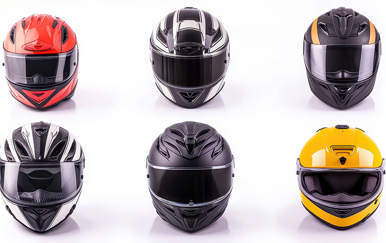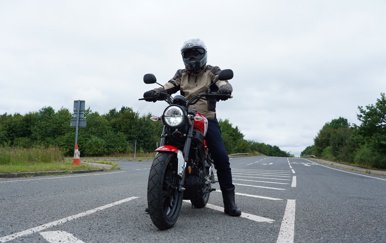Whether you’re a young or new rider, there is still so much to learn about the motorcycle world and whilst choosing the best motorcycle gear for you might seem like a very intimidating task, we promise you it can be quite easy.
In this blog, we are going to be running down everything regarding essential motorcycle gear and answering some of the burning questions you might not know the answers to.
So, without further ado - let’s get into it, shall we?
Is motorcycle gear necessary?
Whilst motorcycle gear (except a helmet) isn’t legally required, it is most definitely necessary if you plan to ride a motorcycle or scooter.
Good quality motorcycle gear can really help to protect you from any type of weather conditions as well as debris and stones from the pavement. Whilst its primary purpose may be for protection in the event of an incident, gear can also aid in protecting you from rain, cold, and adverse weather – it’s an obvious point, but might be worth making from the jump. Purely because some gear is tailored to all-weather, with removable linings and ‘waterproofing’ for year round riding, whilst others are super lightweight and breathable for riding in peak weather, focusing more on the protection via elbow, shoulder and back protectors plus ventilation.
What do you legally have to wear on a motorbike UK?
According to Gov.UK, legally in the UK, you are only required to wear a motorcycle safety helmet. However, this helmet must meet at least one of the following requirements:
- British Standard BS 6658:1985 and carry the BSI Kitemark
- UNECE Regulation 22.05*
- European Economic Area member standard offering the same safety and protection as BS 6658:1985, and carry a mark equivalent to the BSI Kitemark
It is also worth mentioning at the time of writing, whilst there are no laws regarding wearing other motorcycle gear such as jackets and gloves, it is most definitely recommended as it can really save your life in more ways than one.
*Please note that whilst the current regulation is ECE 22.05, as of January 2024 it is 22.06 – and many helmet manufacturers are already releasing helmets to this higher standard. Testing for 22.06 is far more rigorous, with more impact points tested, angled impact testing, and testing visors (plus loads more).
Essential riding gear for beginners:
1. Motorcycle Helmet

As we mentioned previously, it is a legal requirement for you to wear a helmet when riding a motorcycle.
What are the three types of motorcycle helmets?
There are three main types of motorbike helmets you can choose from, these are:
- Open face Helmets
- Full Face Helmets
- Motocross Style
There are other styles too, but for now, we’ll keep to these.
How do I choose a motorcycle helmet?
Finding the perfect helmet isn’t just for safety purposes, comfort plays a massive part too - which is why we’d recommend trying on helmets before buying and going into a local shop to get a better understanding.
A few handy things to do and think about before purchasing your new lid are:
- Measure the circumference of your head just above your eyes to work out roughly which size you’d be.
- Make sure the padding sits snugly on your cheek area
- Secure the chin strap - can you pull the helmet away or twist it from your head?
- Is it tight enough or too tight?
- Is it putting too much pressure on your neck?
It is also worth mentioning that SHARP, the helmet safety scheme, can also help you find the right helmet from a wide variety of manufacturers, providing advice on how to select a helmet that fits correctly and is comfortable.
Is a full face or half face better?
Quite honestly, which is better really depends on your personal preference…
Full-face helmets do undeniably provide you with more protection, especially to your chin and face as well as protecting you from unwanted noise, sun, wind, stones, and most importantly bugs (or wasps)!
Another benefit of full-face helmets also means you shouldn’t have to wear glasses or sunglasses for added protection as there will be a visor to do that job for you - something you sacrifice with half-face helmets.
Onto half-face or ‘open face’ helmets, they tend to be much lighter than full-face helmets meaning on longer trips they are far less fatiguing and also much cooler (not only temperature but style-wise too).
One of the biggest benefits of open-face helmets has to be their better and wider range of view, meaning there are no blind spots and you are much more aware of the traffic around you.
Things to know before buying a helmet
Before you part ways with your hard-earned cash, there are a few things you should know, such as:
- Never purchase a motorcycle helmet second hand
- Make sure any helmet you consider buying has been tested to the current ECE 22.05 (or from January 2024 the higher ECE 22.6 standard)
- A higher price does not always equal better quality
- Make sure it is made with good quality materials such as polycarbonate
- Make sure the visor on your helmet meets a British Standard and displays a BSI Kitemark or the European standard offering (UNCE 22.05).
- Helmets expire after 7 years or, if you wear it daily every 3 years
And, if you want to know more about motorcycle helmets, check out our fully comprehensive motorcycle helmet guide!
2. Motorcycle Visor
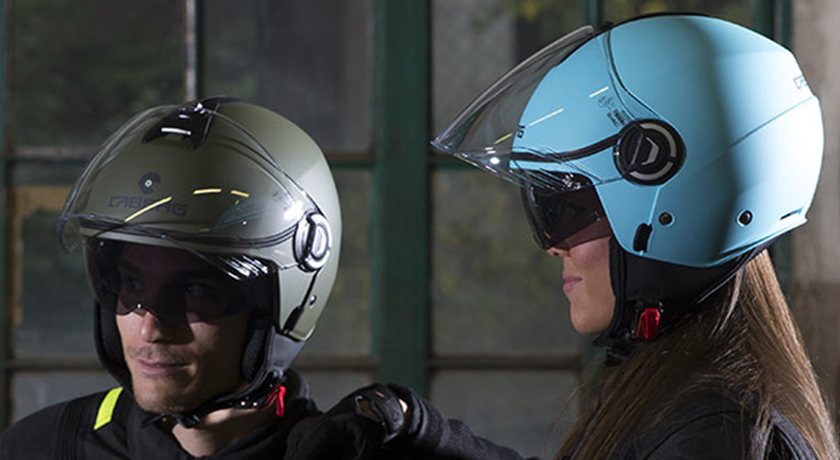
Next up on the list we have motorcycle visors, these clip onto full-face helmets and help to add another layer of protection…
Why do bikers wear visors?
Visors provide added protection in the event that you fall off your bike, as well as protect you from every type of weather condition, debris, and bugs hitting your face and potentially injuring you.
Do visors fit all motorcycle helmets?
No, you’ll have to use a visor designed specifically for your helmet – the sizes and fitment varies between brands.
Why dark visors are illegal
Whilst dark visors are fine to wear during the day, when the sun starts to set, this is when dark visors do not meet the required standard in the UK and you risk being charged with a Section 18 offence (Road Traffic Act 1988). This is because when riding in fading light or darkness it massively limits your visibility and the ability to focus fully on the road.
3. Motorcycle Leathers and Synthetic Clothing
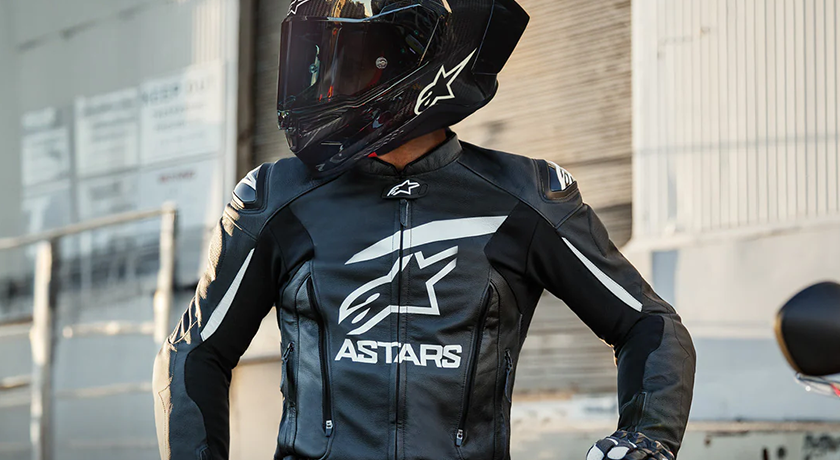
Whilst leather jackets may fit the criteria of a stereotypical biker, they are a great option to protect your safety while out on the open roads. Technology is constantly improving with motorcycle leathers and clothing now coming in either synthetic or textile material items which have all the amazing qualities of leather clothing, just much more breathable and lightweight!
You'll also be pleased to know that thanks to advancements in technology, you can now also get some casual motorcycle clothing (such as jeans and hoodies) that come with built-in protection that meets the required safety standards, so you can rock up to your destination and not have to (necessarily) change into more casual attire. You can find sneakers, jeans, a hoodie, and/or a jacket that look very casual but still provide a good level of safety.
Reasons why you should wear motorcycle leathers/clothing
There are some huge benefits to adding motorcycle leathers to your essential riding gear such as:
- Can protect you in the event of an accident by preventing road rashes, bruises, or even broken bones
- Can help to keep you warm and dry in the wet and winter months
- Enhances your visibility on the road
- They are durable and long-lasting
Can motorcycle leathers and clothing get wet?
If you just wear motorcycle leathers, there will be a likelihood you will end up getting wet as they have very little tolerance against rain. However, if you chose to opt for some waterproof or hybrid motorcycle clothing, this will in fact help you to stay dry no matter how wet you get them.
4. Motorcycle Gloves

Next up on our list today is a pair of motorcycle riding gloves.
First of all, you will want to get yourself a pair of gloves that fit perfectly as you will be getting a lot of use out of them, and secondly I can imagine the longer you ride you will start to build up quite a glove collection for whatever weather condition the UK decides to throw at us.
Quite often all-weather bikers will have two sets on the go as a minimum a nice breathable and light pair for summertime, and much thicker, warmer pair for when the cold weather months hit.
Do you really need motorcycle gloves?
Alike all of the gear on this list, motorcycle gloves are essential in ensuring additional safety, comfort, and fashion. They all help to provide extra grip on your handlebars for enhanced control and protect the hands from various weather conditions and debris, as well as road surfaces should the worst happen.
How do you break in motorcycle gloves fast?
The easiest way to break in your motorbike gloves is by getting out and wearing them while riding as much as possible. They shouldn’t be too bad to begin with, however, if you persist they should become increasingly comfortable the more you wear them.
However, we have heard that soaking your gloves in hot water or steaming them and then letting them try on your hands is also another great way to break your gloves in!
Are heated gloves worth it?
The answer is YES! However, this is much more for all-weather riders. On the other hand, if you are a rider who will only ride in dry or warm months, then you'll pass this on by absolutely fine, but if you are to ride in most weather, heater gloves can be a very worthwhile investment.
As mentioned in our must-have accessories for beginners blog, heated motorcycle gloves are 100% worth it as they can help to keep your hands warm in any weather condition the UK throws at you - the last thing you need is to lose sensation in your hands when riding!
However, nowadays heated motorcycle grips tend to be far more popular on modern-day motorcycles - so if you have them fitted to your bike, you’ll potentially be able to get away with lighter gloves all year round as the grips will do a good job.
5. Motorcycle Boots
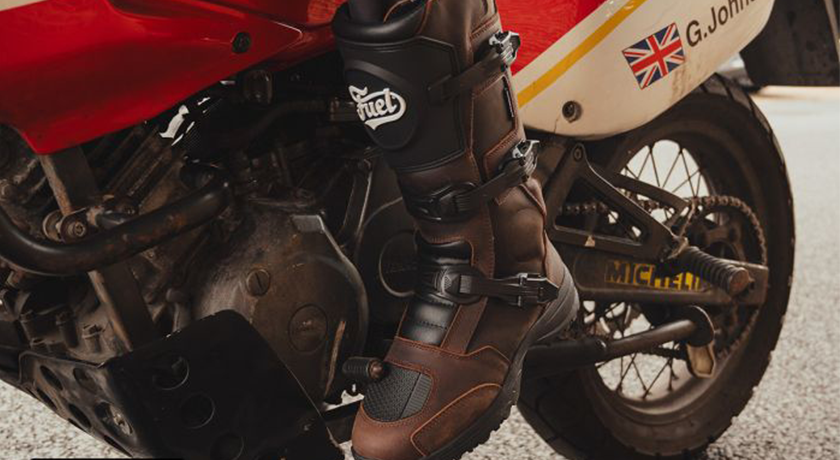
Finishing the list today, we have motorcycle boots!
There would be no point in protecting the rest of your body without getting yourself a pair of motorcycle boots. Boots can help you grip the road surface better as well as provide you better protection - your feet are the closest to the ground when riding a motorcycle so it is essential you look out for them!
What type of boots should I wear to ride a motorbike?
The type of motorcycle boots you should wear is dependent on your riding style.
If you are someone who rides their motorcycle for trips around town or summer riding, it is recommended to opt for ankle boots. However, if you use your motorcycle for road trips, longer commutes, or even off-roading we’d recommend investing in some taller boots that offer more protection and warmth to the lower leg.
Motorcycle boots vs leather boots
Much like many of the items on this list, when it comes to which type of boot is the best really depends on your personal preference and how you ride.
Leather still reigns king when it comes to motorcycle boots thanks to its easy-to-care-for, protective, and longer-lasting characteristics. Whilst they are a little more expensive in comparison to other types of boots on the market, you really are paying for a quality product.
On the other hand, lots of manufacturers have chosen to start making boots with artificial leather as not only is it much cheaper, but it is also more durable and waterproof too!
Lastly, as we mentioned previously in this blog, thanks to the advances in casual motorcycle gear you will also be able to find some great protective trainer style boots, which look like standard hi-top trainers but have extra protection thrown in - such as the RST HiTop Moto Sneakers!
What should you not wear when riding a motorcycle?
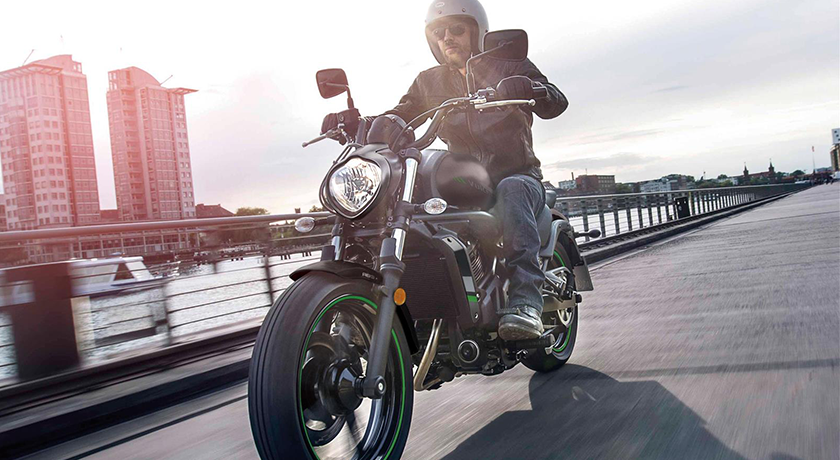
Now we’ve finished going through the best motorcycle gear for beginners, it is most definitely worth highlighting some of the items of clothing you should never wear when riding your motorcycle:
Secondhand or expired helmets
As we mentioned in the helmet section, under no circumstance should you buy nor wear an expired or second-hand helmet. You do not know how these helmets have been treated and how effective they truly are anymore. Your best bet is to buy brand new and keep your eye on the expiration date.
Short-sleeved t-shirts and shorts
Whilst it may be tempting in summer when the weather is hot and the last thing you want to do is put on heavy motorcycle gear, under no circumstance should you get on your motorbike in just a t-shirt or shorts. These items of clothing will provide no protection for your skin and in the event of an accident, you can cause yourself some serious harm.
Loose or very baggy clothing
When riding a motorcycle opt for tighter clothing and gear. The baggier the clothing the more likely you are to get stuck or attached to something which can be extremely dangerous.
Trainers
If you intend on riding your motorcycle, It is advisable not to wear trainers. Instead, opt for proper leather or motorcycle shoes to keep your feet safe.
Ready to ride!
So there you have it…
I hope you enjoyed our rundown on the best motorcycle gear you should invest in as a beginner. If you have any other questions or queries regarding learning to ride, please head over to our new rider general FAQs page as well as our 6 things to know in the event of an accident article!
Last but not least, another thing you most definitely will need to invest in if you intend on riding your motorcycle is insurance - so if you need a motorcycle insurance quote, make sure to get a quote direct with Lexham!



